Search Result
Results for "
indicator dye
" in MedChemExpress (MCE) Product Catalog:
8
Biochemical Assay Reagents
| Cat. No. |
Product Name |
Target |
Research Areas |
Chemical Structure |
-
- HY-118320
-
|
Mordant orange 1
|
Fluorescent Dye
|
Others
|
|
Alizarine Yellow R (Mordant orange 1), a salicylic acid derivative, is a azo dye. Alizarine Yellow R is mostly used as a pH indicator, as a biological stain in chemical examinations and also in dyeing industries .
|
-
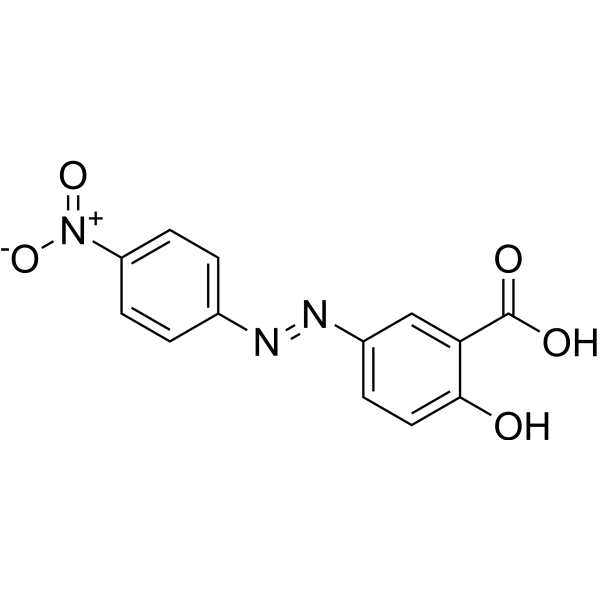
-
- HY-D0252
-
|
|
Fluorescent Dye
|
Others
|
|
m-Cresol purple is a pH indicator dye with large cross section and halochromic property in neutral pH range .
|
-

-
- HY-D1681
-
|
|
Fluorescent Dye
|
Others
|
|
Rhod-590 AM Ester is a fluorescent dye. Rhod-590 AM Ester can be used as a fluorescent indicator for calcium determination .
|
-
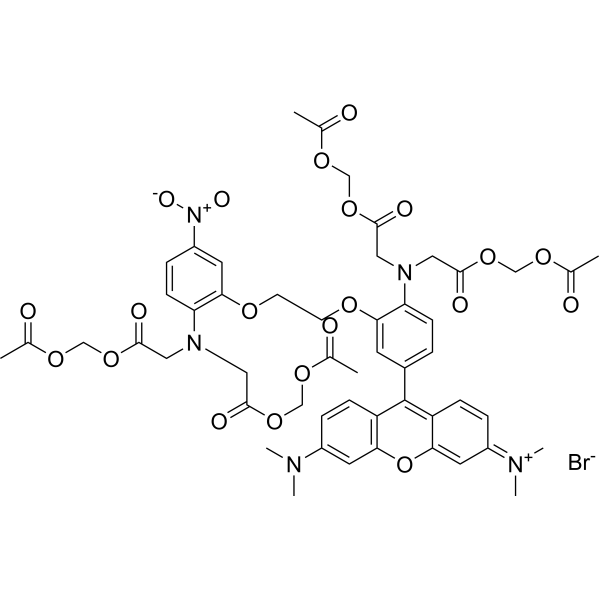
-
- HY-W140535
-
|
|
Fluorescent Dye
|
Others
|
|
Tetrasodium,4-(1,10-phenanthrolin-4-yl)benzenesulfonate,ruthenium((II)) is a luminescent indicator dye .
|
-
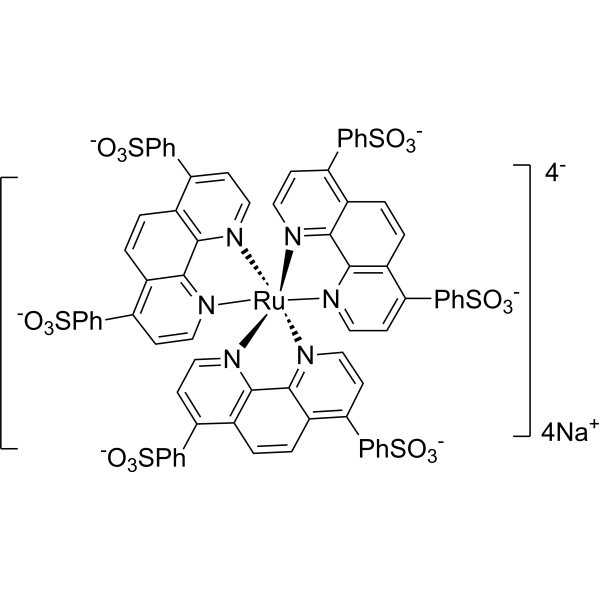
-
- HY-D1484
-
|
1,1'-Diethyl-2,4'-cyanine iodide
|
Fluorescent Dye
|
Others
|
|
Ethyl red (1,1'-Diethyl-2,4'-cyanine) iodide is an azo dye and acid–base indicator .
|
-
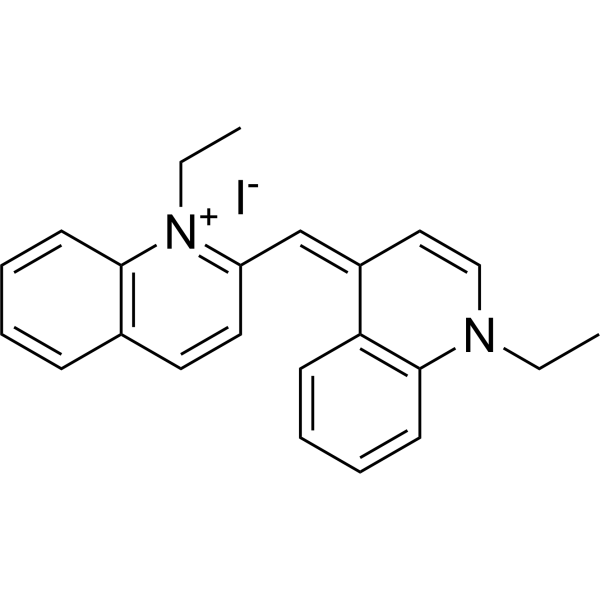
-
- HY-W003112
-
|
|
Fluorescent Dye
|
Others
|
|
4-Fluororesorcinol is a precursor used in the preparation of fluorescent dyes or indicators such as fluorescein, coumarin and resorcinol analogues .
|
-
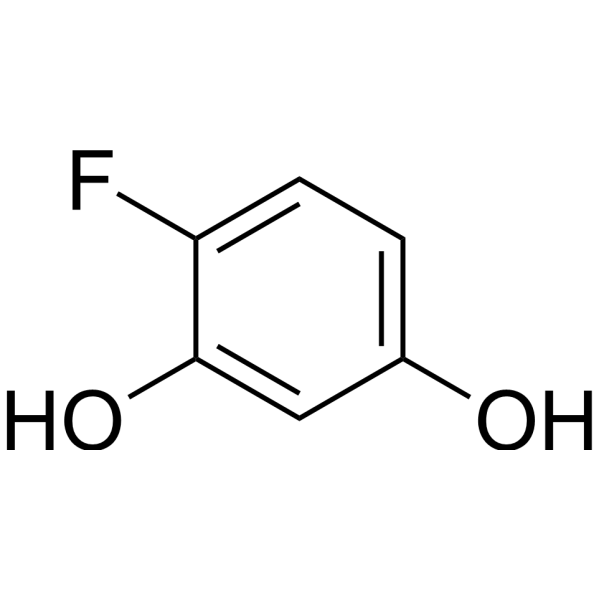
-
- HY-D1442
-
|
|
Fluorescent Dye
|
Others
|
|
SBFI (tetraammonium), the tetraammonium salt of SBFI, is a sodium fluorescence indicator. SBFI (tetraammonium) is sodium-sensitive dye. The excitation wavelength is set 333 nm, and the emission wavelength is 539 nm for SBFI .
|
-
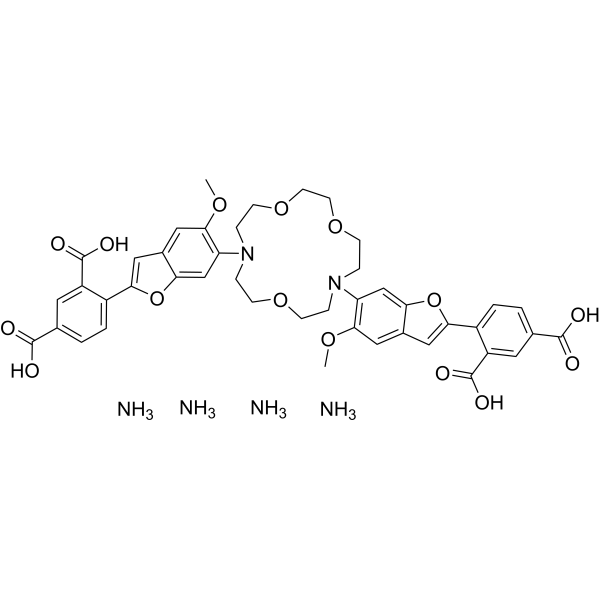
-
- HY-D0215
-
|
Safranine T
|
Fluorescent Dye
|
Others
|
|
Safranin (Safranin T) is an important and classical phenazinium dye. Safranin has been extensively used in the academic field as a spectroscopic probe and indicator. Safranin possesses a planar structure and cationic charge. It can readily intercalate into biological macromolecules, including DNA and proteins. Safranin can be used as a redox indicator in the determination of metal ion concentration .
|
-
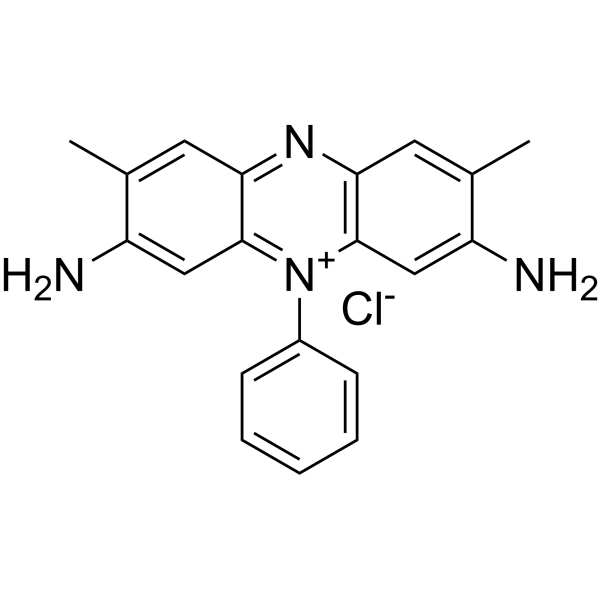
-
- HY-D1091
-
-
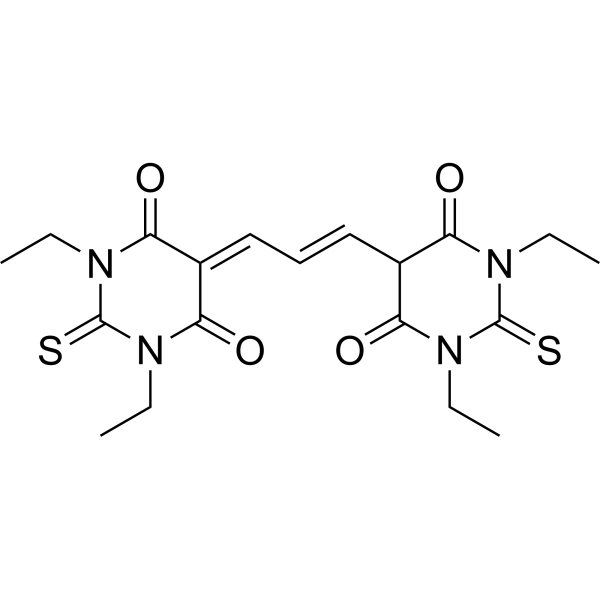
-
- HY-W151206
-
|
|
Fluorescent Dye
|
Others
|
|
Hydroxy naphthol blue disodium, an azo dye, is a metal indicator for calcium and a colorimetric reagent for alkaline earth metal ions ( λmax = 650 nm). In the pH range between 12 and 13, the solution of the indicator is reddish pink in the presence of calcium ion and to deep blue in the presence of disodium EDTA .
|
-

-
- HY-D0211
-
-
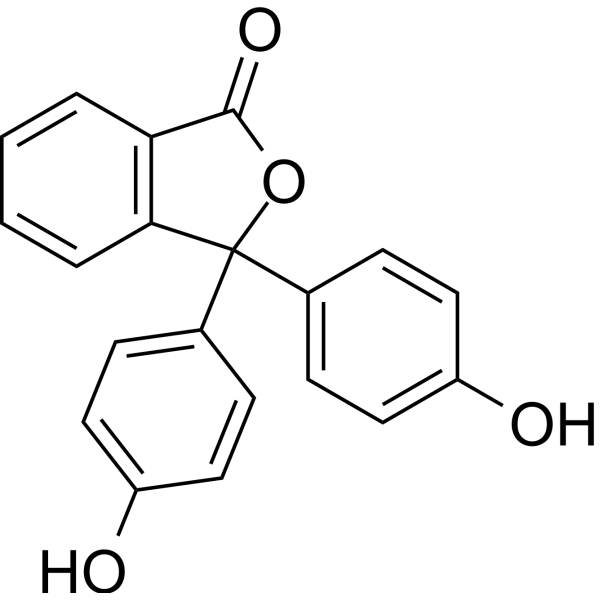
-
- HY-D0284
-
-
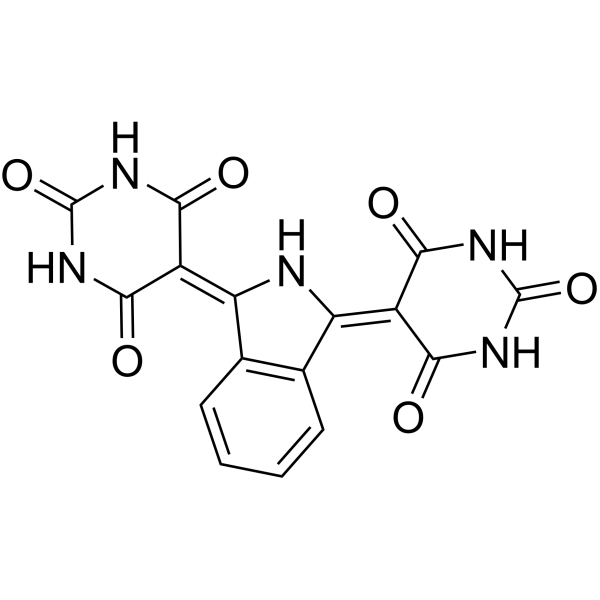
-
- HY-D0040
-
Calcein
4 Publications Verification
Fluorexon
|
Fluorescent Dye
|
Others
|
|
Calcein is a fluorescent dye and self-quenching probe, used as an indicator of lipid vesicle leakage, and also as a complexometric indicator for titration of calcium ions with EDTA, and for fluorometric determination of calcium.
|
-

-
- HY-D0265
-
|
|
Fluorescent Dye
|
Others
|
|
Thymolphthalein is an electrochemically active dye due to the presence of thymol fragments. Thymolphthalein is a Phthalein dye used as an acid-base indicator. It is colourless in acid pH and is blue in basic pH .
|
-
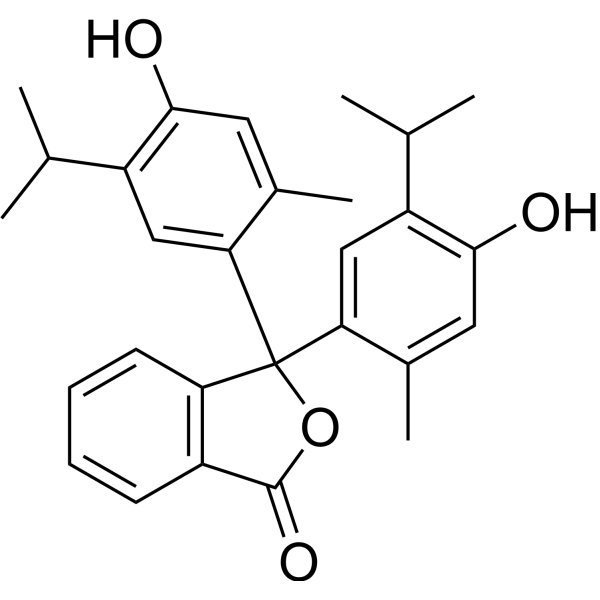
-
- HY-D0168
-
|
3,5-Dihydroxytoluene
|
Fluorescent Dye
|
Others
|
|
Orcinol (3,5-Dihydroxytoluene) is an organic compound used as biological dye and indicator for proteomics research.
|
-
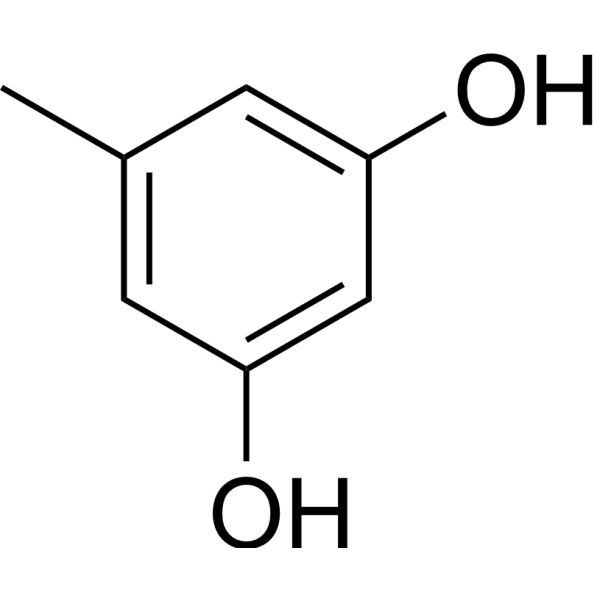
-
- HY-D1502
-
-
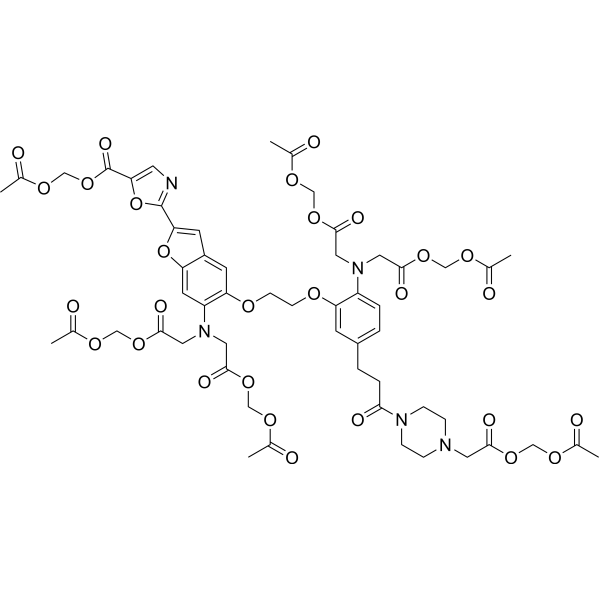
-
- HY-W110904
-
|
|
Fluorescent Dye
|
Others
|
|
Methylthymol blue tetrasodium is a metallochromic indicator dye and can be used for determination of sulfate and calcium .
|
-
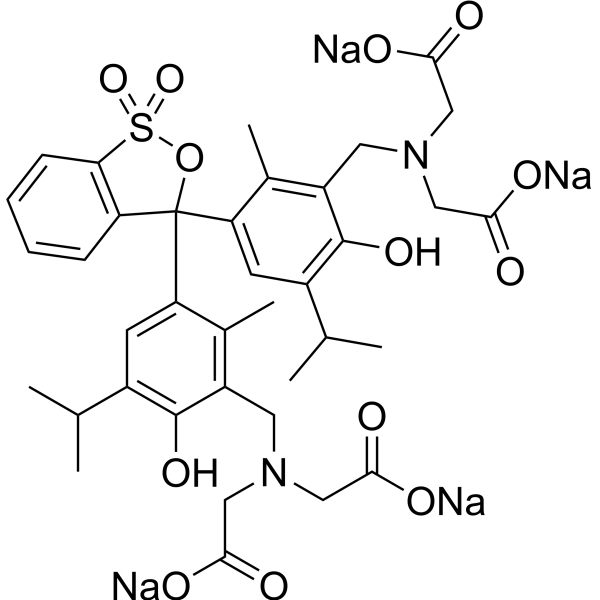
-
- HY-B1571
-
|
|
|
|
|
Bromophenol blue is an acid phthalein dye, and it is used as a tracking dye for electrophoresis. Bromophenol blue is also used as a pH indicator, with a transition range of pH 3 to 4.6 .
|
-
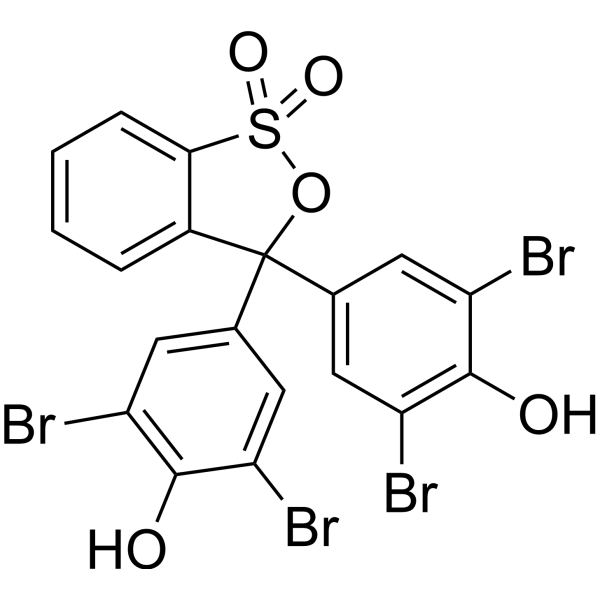
-
- HY-D0169A
-
|
Phenolsulfonephthalein sodium salt
|
Fluorescent Dye
|
Others
|
|
Phenol red (Phenolsulfonephthalein) sodium salt is a pH indicator dye, relying on a distinct color change from pink to yellow in case of a positive reaction .
|
-
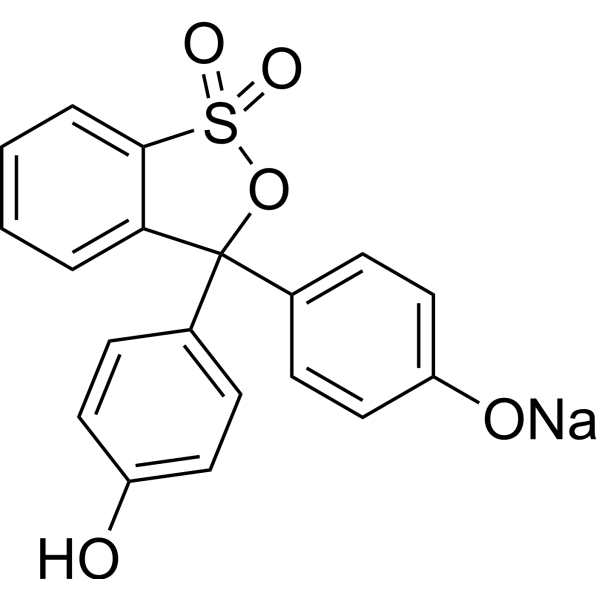
-
- HY-D0169
-
|
Phenolsulfonephthalein
|
Fluorescent Dye
|
Others
|
|
Phenol red (Phenolsulfonephthalein) is a pH indicator dye, relying on a distinct color change from pink to yellow in case of a positive reaction .
|
-
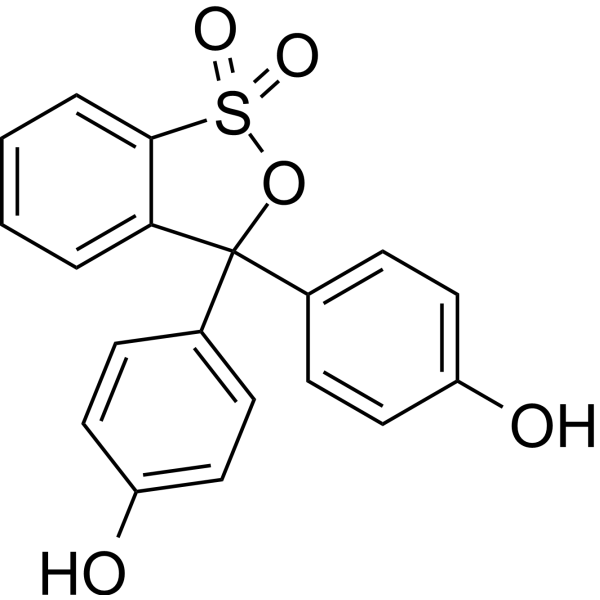
-
- HY-D0285
-
|
PTCDI
|
Fluorescent Dye
|
Others
|
|
3,4,9,10-Perylenetetracarboxylic-diimide (PTCDI), an organic heteropolycyclic compound, is a dimethylimine that can be used in biological dyes and indicators .
|
-
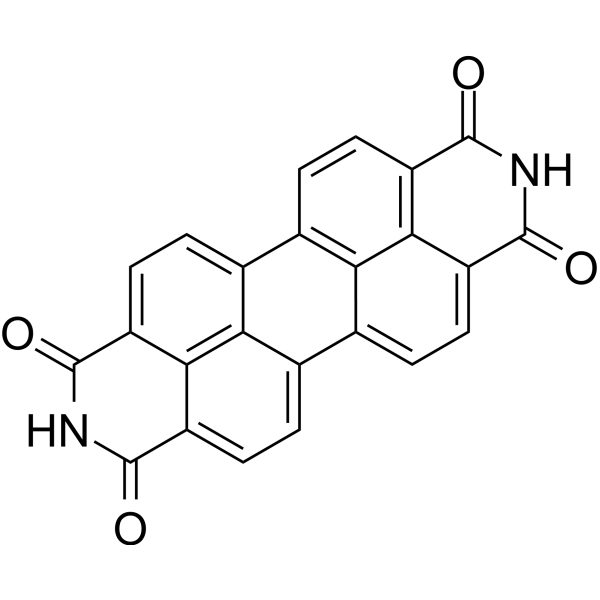
-
- HY-101887
-
|
|
Fluorescent Dye
|
Others
|
|
Calcein Blue, a membrane-impermeant fluorescent dye, is a coumarin derivative that contains an iminodiacetic acid structure. Calcein Blue is also a metallofluorochromic indicator .
|
-

-
- HY-D0798
-
|
|
Fluorescent Dye
|
Others
|
|
Catechol violet is an efficient and versatile ligand for Cu(I)-catalyzed C-S coupling reactions. Catechol violet is also a complexometric indicator dye .
|
-
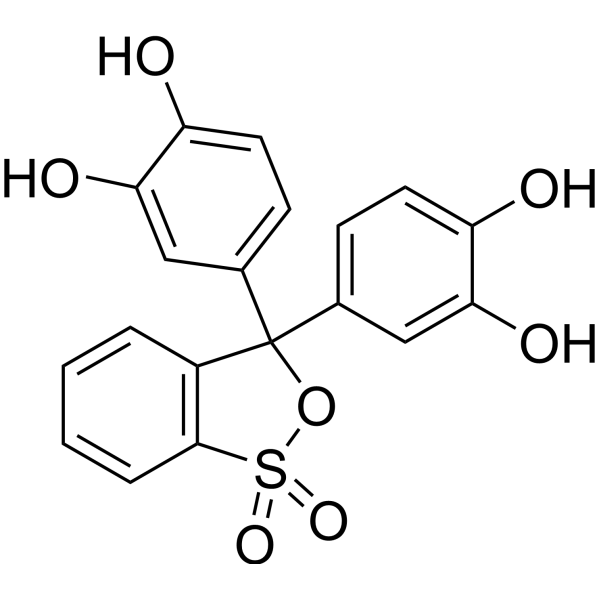
-
- HY-N1442
-
|
Orange II; D&C Orange NO. 4
|
|
|
|
Acid orange 7 (Orange II), an azo dye, is an indicator pollutant. Acid orange 7 appears in manufacturing wastewater disposed of from the textile, food, and cosmetic industries .
|
-
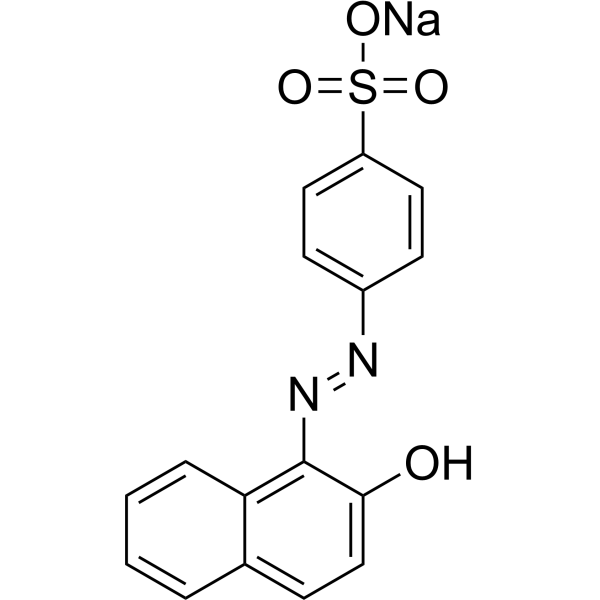
-
- HY-D1773
-
|
|
Fluorescent Dye
|
Others
|
|
YOYO-3 is a cell-impermeant dye with far-red fluorescence used as nulear counterstain and dead cell indicator. It generates bright fluorescence upon binding to DNA.
|
-
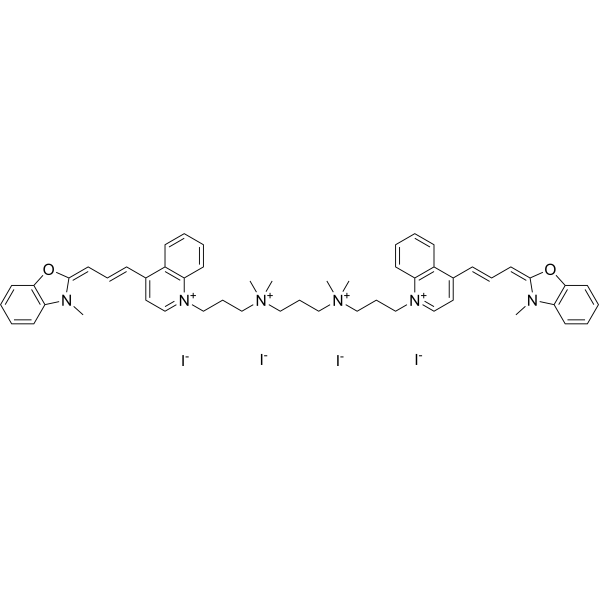
-
- HY-D0112
-
|
|
Fluorescent Dye
|
Others
|
|
7-Hydroxycoumarin-4-acetic acid, a pH-indicator dye, is covalently bound to bovine serum albumin (BSA) at the positions of reactive amino groups (λmax=326 nm) .
|
-

-
- HY-W110798
-
|
|
Biochemical Assay Reagents
|
Others
|
|
Bromophenol blue indicator (3.0-4.6) is a synthetic dye commonly used as an acid-base indicator with a transition range of pH 3.0-4.6. Bromophenol blue indicator (3.0-4.6) is water soluble and changes color from yellow to blue as the pH of the solution changes from acidic to basic. Its unique chemical properties make it an important ingredient in a variety of scientific applications, especially in biochemistry and molecular biology. In addition, it can be used as a stain in microbiology and histology. However, Bromophenol blue indicator (3.0-4.6) has potential irritating and staining properties.
|
-

-
- HY-D0121
-
|
|
Fluorescent Dye
|
Others
|
|
INDO 1 is a fluorescent Ca 2+ indicator, binds specifically to Ca 2+ while emitting fluorescence, the maximum emission wavelength shifts from 485 nm before binding to 410 nm .
|
-
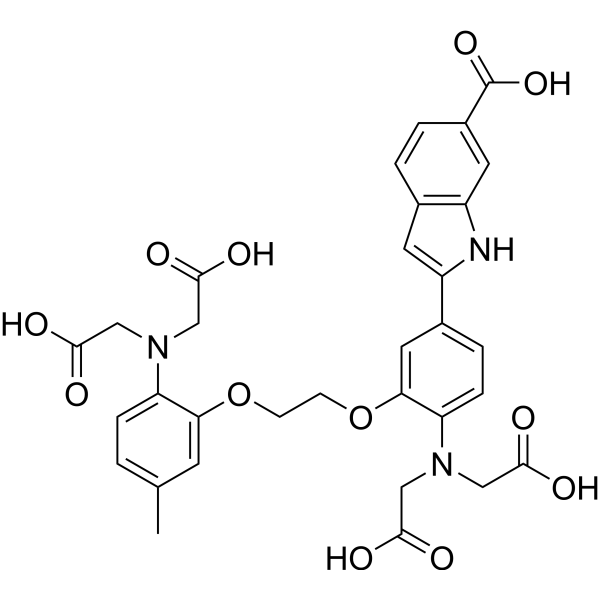
-
- HY-D0121A
-
|
|
Fluorescent Dye
|
|
|
INDO 1 pentapotassium is a fluorescent Ca 2+ indicator, binds specifically to Ca 2+ while emitting fluorescence, the maximum emission wavelength shifts from 485 nm before binding to 410 nm .
|
-

-
- HY-D1628
-
-
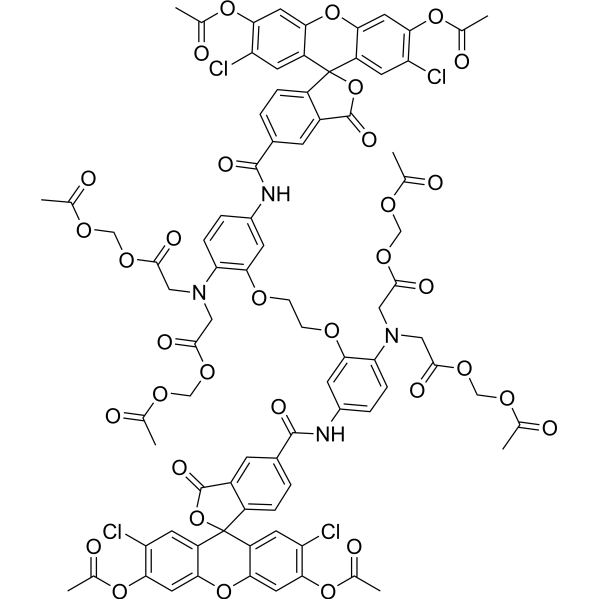
-
- HY-D1755
-
|
|
Fluorescent Dye
|
Others
|
|
Fluo-3FF AM is a low affinity (Kd = 42 μM) fluorescent Ca 2+ sensitive indicator (Abs/Em = 462 nm/526 nm). Fluo-3FF AM is Mg 2+ insensitive and relatively photostable. Fluo-3FF AM is an analog of Fluo-3FF AM. Fluo-3FF AM is essentially non-fluorescent, but exhibits a strong fluorescence enhancement upon entry into cells and binding to calcium.
|
-
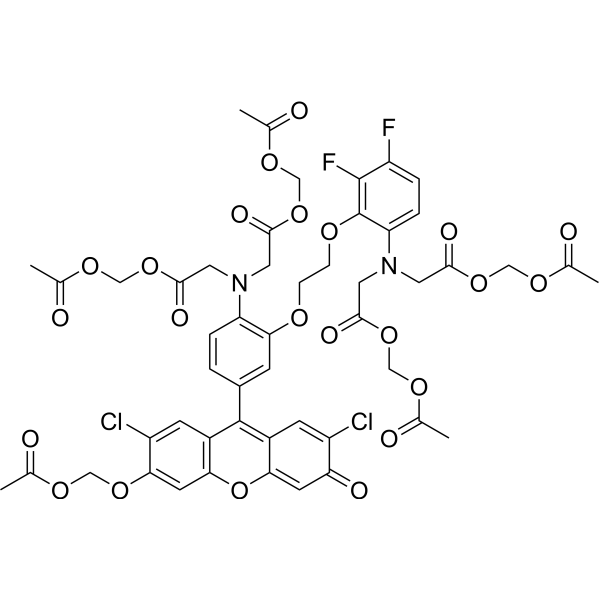
-
- HY-D1760
-
|
Sodium-binding benzofuran isophthalate
|
Fluorescent Dye
|
Others
|
|
SBFI is a membrane-permeant, fluorescent Na + indicator dye. SBFI is excited at 340 nm and the fluorophore emission is collected at 450 nm . SBFI selective for Na + over K + with Kd values of 20 and 120 mM for these ions, respectively. .
|
-
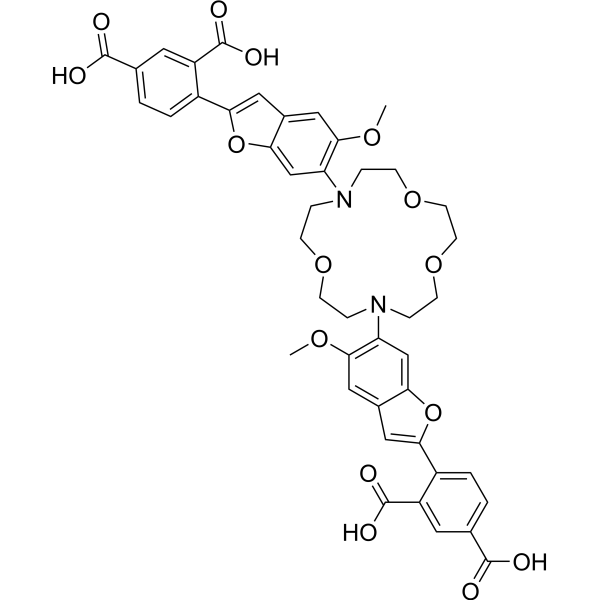
-
- HY-131510
-
|
SNARF-DE
|
Fluorescent Dye
|
Others
|
|
Chromoionophore XIII (SNARF-DE) is a pH senor that enables excitation with red light. Chromoionophore XIII functionality renders the indicator molecule lipophilic and water-insoluble but also prevents lactonization of the dye in an apolar environment .
|
-
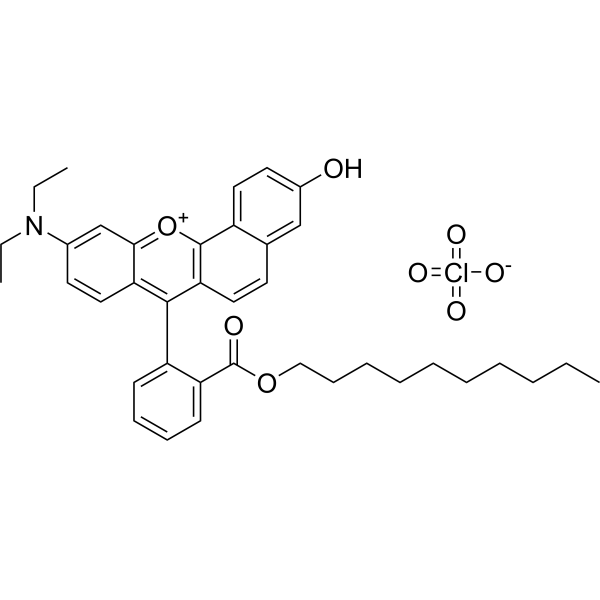
-
- HY-D0011
-
|
|
Biochemical Assay Reagents
|
Others
|
|
Bromophenol blue sodium is a pH indicator. It changes from yellow at pH 3.0 to blue at pH 4.6. Bromophenol blue sodium is also used as a tracking dye to monitor the process of agarose gel electrophoresis and polyacrylamide gel electrophoresis .
|
-
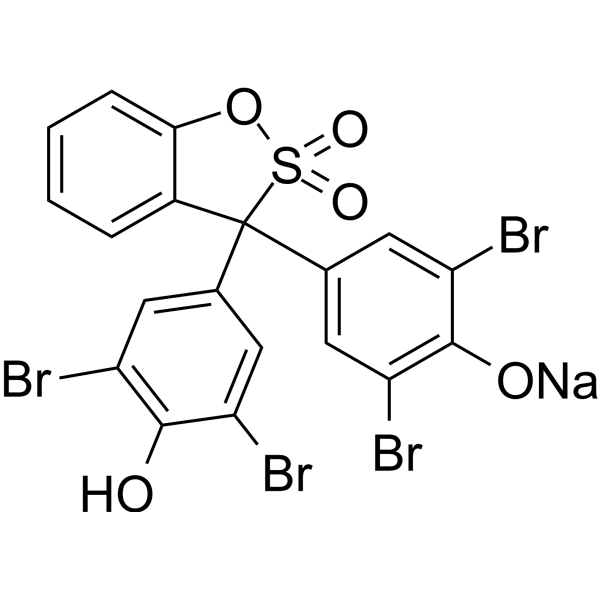
-
- HY-D0254
-
Gallein
4 Publications Verification
Pyrogallol phthalein
|
PI3K
|
Cancer
|
|
Gallein is a G protein βγ (Gβγ) subunit signalling inhibitor. Gallein disrupts the interaction of Gβγ subunits with the PI3Kγ. Anticancer agent . Gallein used as a red dye, an acid-base indicator and as a detection reagent for phosphates .
|
-
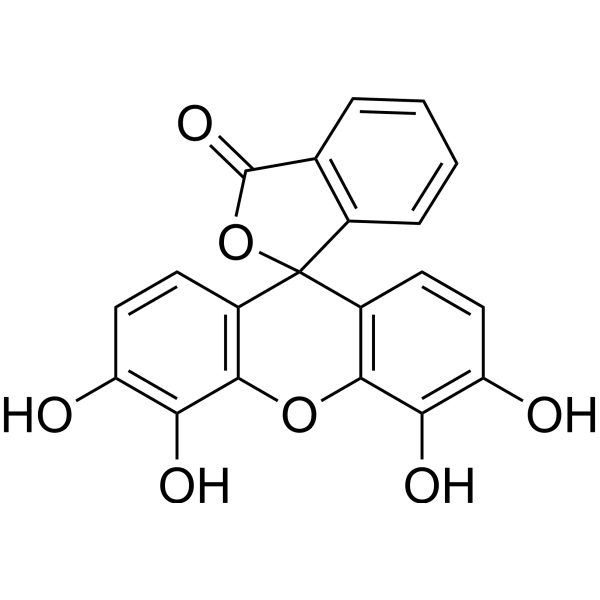
-
- HY-D0142
-
|
|
Fluorescent Dye
|
Others
|
|
Pyrene-1,3,6,8-tetrasulfonic acid tetrasodium is a fluorescent dye and pH indicator, also as a ligand of multifunctional metal-organic framework. Pyrene-1,3,6,8-tetrasulfonic acid tetrasodium has been used to detect CO2 release .
|
-

-
- HY-D0018
-
|
Dichlorophenylindophenol sodium; DCPIP sodium; Indochlorophenol sodium
|
Biochemical Assay Reagents
|
Others
|
|
DCIP sodium is a blue dye commonly used in various biochemical and biotechnological applications as an indicator of redox reactions. DCIP sodium has unique chemical properties that change color according to the oxidation state of the substance being tested. It is commonly used in enzyme assays, such as measuring the activity of succinate dehydrogenase, or in protein quantification methods, such as the Lowry assay.
|
-
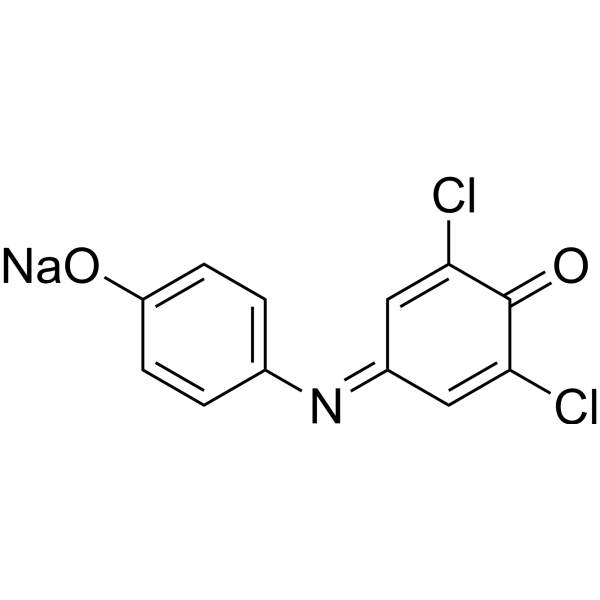
-
- HY-D1677
-
|
|
Fluorescent Dye
|
Others
|
|
5(6)-Carboxynaphthofluorescein is a pH-dependent fluorophore. 5(6)-Carboxynaphthofluorescein shows good sensitivity in an alkaline pH range and it can be exploited in the construction of fiber-optic pH sensors. 5(6)-Carboxynaphthofluorescein can be used as a fluorescent pH indicator (Ex/Em=593/668 nm) .
|
-

-
- HY-128369
-
|
Metanil Yellow
|
Cytochrome P450
|
Others
|
|
Acid Yellow 36 (Metanil Yellow) is an azo dye and a pH indicator. Acid Yellow 36 changes its color from red at pH 1.2 to yellow at pH 2.3. Acid Yellow 36 is used in the leather, paper and textile industries. Acid Yellow 36 acts as a bifunctional inducer of specific isozymes of P-450 and cytosolic enzymes .
|
-

-
- HY-125457
-
|
p-Naphtolbenzein
|
Fluorescent Dye
|
Others
|
|
α-Naphtholbenzein (p-Naphtolbenzein) is a dye. α-Naphtholbenzein can be used as a pH indicator. α-Naphtholbenzein has a visual transition from yellow (pH0-8.2) to turquoise (pH10). α-Naphtholbenzein is often used during sequential injection analysis technique done for acid-base titrations .
|
-
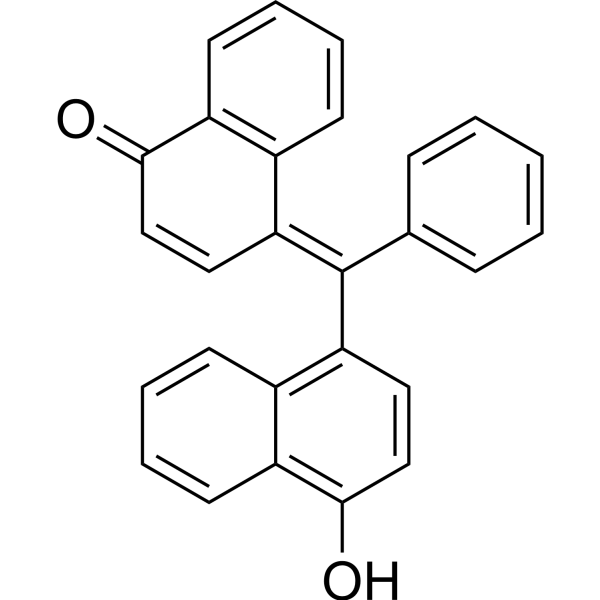
-
- HY-D1055
-
MitoSOX Red
Maximum Cited Publications
24 Publications Verification
|
Fluorescent Dye
Reactive Oxygen Species
Mitochondrial Metabolism
|
Cancer
|
MitoSOX Red is a live cell fluorescent probe that specifically targets mitochondria and is cell membrane permeable. MitoSOX Red enters mitochondria and is oxidized by superoxide but not by other ROS or RNS generating systems. The oxidized MitoSOX Red then binds to nucleic acids in mitochondria/nucleus, producing strong red fluorescence. MitoSOX Red can be used as a fluorescent indicator to specifically detect superoxide. In addition, superoxide dismutase (SOD) can prevent the oxidation of MitoSOX Red.
Excitation/emission wavelength: 510/580 nm.
|
-
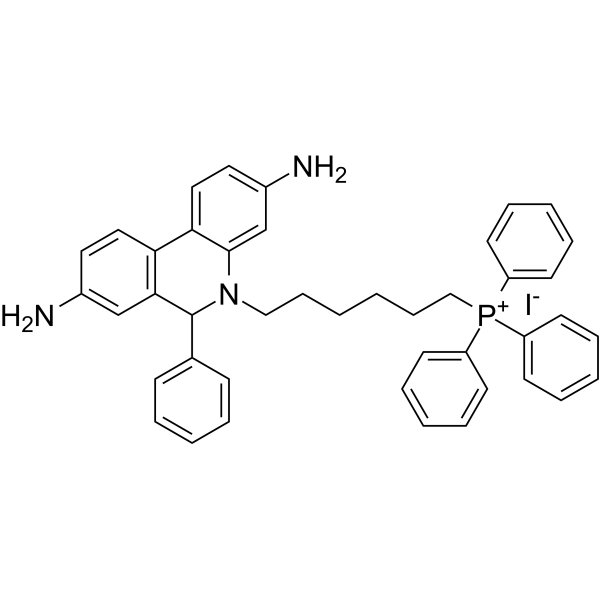
-
- HY-W250148
-
|
Spirit nigrosine
|
Biochemical Assay Reagents
|
Others
|
|
Solvent black 5 (Spirit nigrosine) is a synthetic dye belonging to the family of azo dyes. Also known as oil black or naphthol black, it is dark blue-black and has excellent solubility in organic solvents. Solvent black 5 is commonly used as a colorant in various industrial applications such as printing inks, coatings and plastics. It can also be used as an indicator dye to detect the presence of metals in solution. Furthermore, due to its high absorption and emission properties in the near-infrared region, it has been used in scientific research as a fluorescent biomarker for tissues and cells. However, Solvent black 5 has been reported to have potentially toxic effects on human health and the environment and its use is therefore regulated in some countries.
|
-
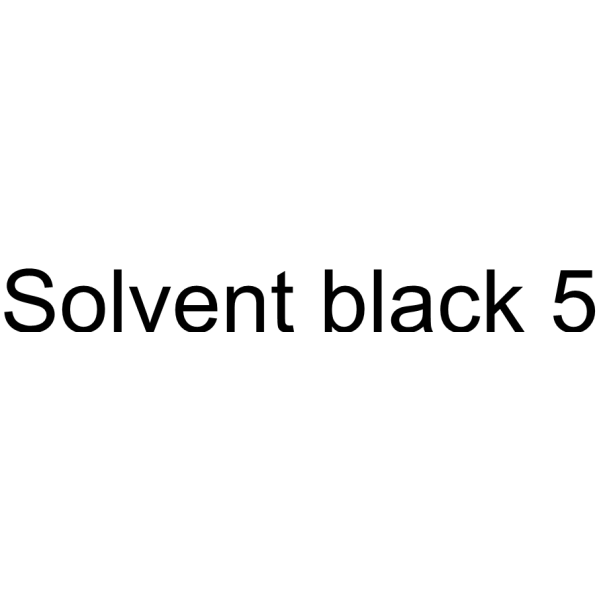
-
- HY-15935C
-
|
|
Fluorescent Dye
|
Others
|
|
X-Gluc sodium is a dye reagent for the detection of β-glucuronidase (GUS), an enzyme produced by E. coli. X-Gluc sodium can be used to detect E. coli contamination in food, water and the urinary tract (GUS as a specific detection indicator). X-Gluc sodium is also widely used in molecular biology experiments to label and detect the expression of target genes (reacts with the GUS gene, appears blue) .
|
-

-
- HY-W040144
-
|
|
Fluorescent Dye
|
Others
|
|
Bromocresol green is a pH-sensitive triphenylmethane dye commonly used for the determination of protein and albumin in serum. Bromocresol green is a bio-based dye with a yellow-green to blue-green color. Bromocresol green turns yellow (λmax=435 nm, protonated form) when placed in acidic solution (e.g. pH=4.15), and turns blue in basic solution (λmax=615 nm, deprotonated form). Bromocresol green is widely used as a pH indicator in the field of biochemical analysis. In addition, Bromocresol green is also used to detect the concentration of molecules such as creatinine, and to judge the viability of cells .
|
-
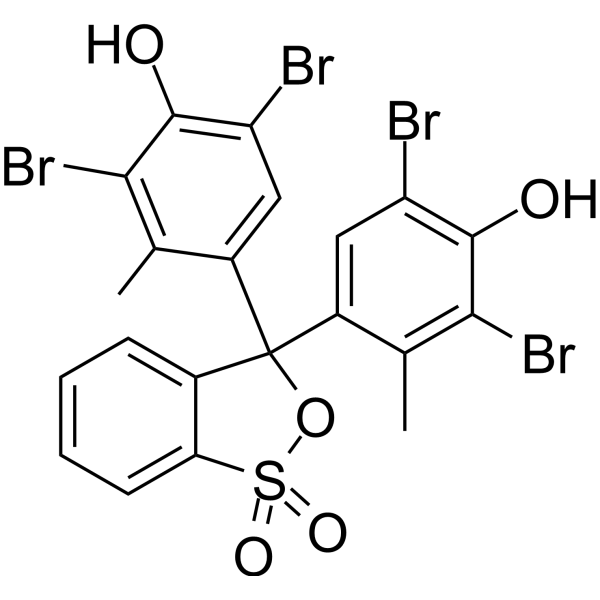
-
- HY-15935B
-
|
|
|
|
|
X-Gluc cyclohexanamine is a dye reagent for the detection of β-glucuronidase (GUS), an enzyme produced by E. coli. X-Gluc cyclohexanamine can be used to detect E. coli contamination in food, water and the urinary tract (GUS as a specific detection indicator). X-Gluc cyclohexanamine is also widely used in molecular biology experiments to label and detect the expression of target genes (reacts with the GUS gene, appears blue) .
|
-
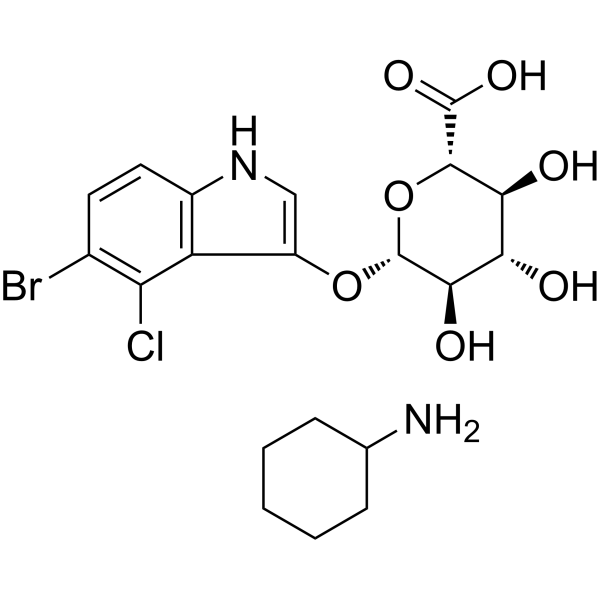
-
- HY-D0009
-
|
|
Fluorescent Dye
|
Others
|
|
Bromocresol green sodium is an anionic dye. Bromocresol green sodium can be used for pH indication and DNA agarose gel electrophoresis. Bromocresol green sodium is also used in mammalian albumin measurement. Bromocresol green sodium deprotonates and produces the monoanionic form of yellow colour at lower pH (acidic condition), and produces dianionic blue colour at the basic condition .
|
-

-
- HY-D0034
-
|
ABMDMA
|
Fluorescent Dye
|
Cancer
|
|
9,10-Anthracenediyl-bis(methylene)dimalonic acid (ABMDMA) is a biological dye and indicator used to detect singlet oxygen generation (SOG). 9,10-Anthracenediyl-bis(methylene)dimalonic acid is water-soluble derivative of anthracene. 9,10-Anthracenediyl-bis(methylene)dimalonic acid can be photobleached by singlet oxygen to its corresponding endoperoxide. This reaction can be monitored spectrophotometrically by recording the decrease of absorbance at 400 nm .
|
-

-
- HY-118540
-
|
Diazoresorcinol
|
Fluorescent Dye
|
Others
|
|
Resazurin (Diazoresorcinol) is a water-soluble, non-toxic, stable, membrane-permeable blue non-fluorescent dye (faintly fluorescent). Resazurin is used as a redox indicator, can be reduced to pink, highly fluorescent Resorufin (Ex=530-560 nm, Em=590 nm) in living cells. Resazurin can be used for the detection of cell viability, toxicity, proliferation, migration and invasion in cells (human, plant and animal, bacterial and fungal) .
|
-

-
- HY-W250147
-
|
Victoria blue B
|
Biochemical Assay Reagents
|
Others
|
|
Basic blue 26 (Victoria blue B) is a synthetic cationic dye belonging to the class of triarylmethane dyes. It has a bright blue color and is commonly used as a colorant for a variety of applications, including textiles, paper and leather. Basic Blue 26 is also used as a biological stain for DNA and protein detection in laboratories. Due to its ability to bind negatively charged materials, it can be used as an indicator of the presence of specific molecules in biological samples. However, Basic blue 26 has been reported to have potentially harmful effects on human health and the environment and its use is regulated in some countries. Proper handling and disposal procedures are necessary to minimize its impact on the environment.
|
-
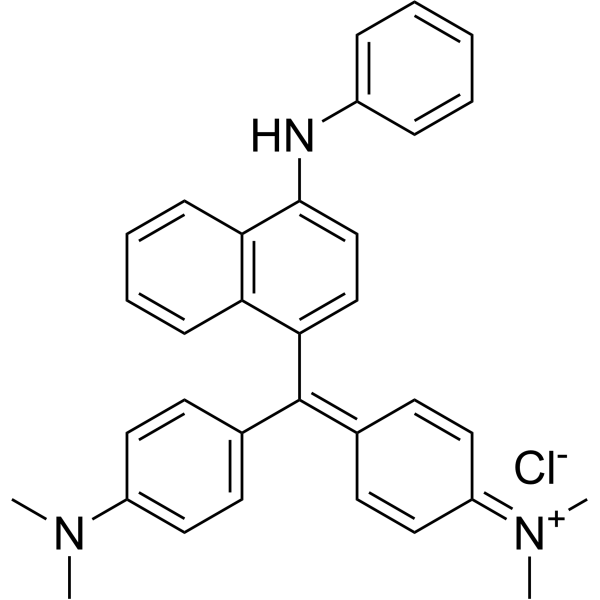
-
- HY-D0166A
-
|
|
Biochemical Assay Reagents
|
Others
|
|
Neutral Red (IND) is an organic dye commonly used in biology and cytology laboratories. It can be used to stain living cells, secreted proteins and other molecular structures, etc., and has a wide range of applications in cell imaging and staining. In addition, Neutral Red (IND) is widely used in industrial fields such as water treatment, food processing and paper manufacturing, for example as an indicator or colorant. Although the compound has no direct medical application, it has important application value in the fields of biology, chemistry and industry.
|
-

- HY-D1447
-
|
|
Fluorescent Dye
|
Others
|
|
Fluo-3FF pentapotassium is a cell-permeable acetoxy-methyl ester of Fluo-3FF, a fluorescent calcium indicator. Fluo-3FF is a di-fluorinated analog of Fluo-3 with a 100-fold lower affinity than Fluo-3 for calcium (Kds = 42 and 0.4 碌M, respectively). For its low affinity, Fluo-3FF is used for studying compartments with high concentrations of calcium, such as endoplasmic reticulum, where high affinity dyes will be insensitive to luminal fluctuations.
|
-
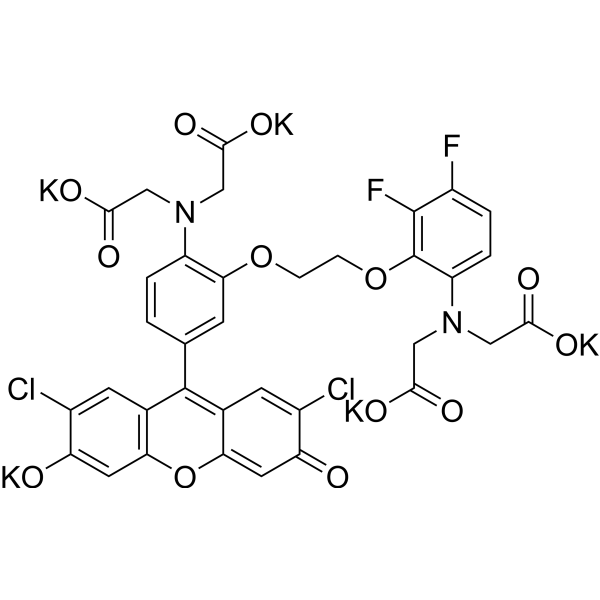
| Cat. No. |
Product Name |
Type |
-
- HY-118320
-
|
Mordant orange 1
|
Fluorescent Dyes/Probes
|
|
Alizarine Yellow R (Mordant orange 1), a salicylic acid derivative, is a azo dye. Alizarine Yellow R is mostly used as a pH indicator, as a biological stain in chemical examinations and also in dyeing industries .
|
-
- HY-D0215
-
|
Safranine T
|
Dyes
|
|
Safranin (Safranin T) is an important and classical phenazinium dye. Safranin has been extensively used in the academic field as a spectroscopic probe and indicator. Safranin possesses a planar structure and cationic charge. It can readily intercalate into biological macromolecules, including DNA and proteins. Safranin can be used as a redox indicator in the determination of metal ion concentration .
|
-
- HY-D1484
-
|
1,1'-Diethyl-2,4'-cyanine iodide
|
Dyes
|
|
Ethyl red (1,1'-Diethyl-2,4'-cyanine) iodide is an azo dye and acid–base indicator .
|
-
- HY-D1442
-
|
|
Fluorescent Dyes/Probes
|
|
SBFI (tetraammonium), the tetraammonium salt of SBFI, is a sodium fluorescence indicator. SBFI (tetraammonium) is sodium-sensitive dye. The excitation wavelength is set 333 nm, and the emission wavelength is 539 nm for SBFI .
|
-
- HY-D1091
-
|
|
Fluorescent Dyes/Probes
|
|
DiSBAC2(3) is an anionic membrane-potential-sensitive dye. DiSBAC2(3) is a plasma membrane potential indicator .
|
-
- HY-D0211
-
-
- HY-D0040
-
Calcein
4 Publications Verification
Fluorexon
|
Fluorescent Dyes/Probes
|
|
Calcein is a fluorescent dye and self-quenching probe, used as an indicator of lipid vesicle leakage, and also as a complexometric indicator for titration of calcium ions with EDTA, and for fluorometric determination of calcium.
|
-
- HY-D0168
-
|
3,5-Dihydroxytoluene
|
Dyes
|
|
Orcinol (3,5-Dihydroxytoluene) is an organic compound used as biological dye and indicator for proteomics research.
|
-
- HY-D1502
-
-
- HY-W110904
-
|
|
Dyes
|
|
Methylthymol blue tetrasodium is a metallochromic indicator dye and can be used for determination of sulfate and calcium .
|
-
- HY-D0169A
-
|
Phenolsulfonephthalein sodium salt
|
Dyes
|
|
Phenol red (Phenolsulfonephthalein) sodium salt is a pH indicator dye, relying on a distinct color change from pink to yellow in case of a positive reaction .
|
-
- HY-D0169
-
|
Phenolsulfonephthalein
|
Dyes
|
|
Phenol red (Phenolsulfonephthalein) is a pH indicator dye, relying on a distinct color change from pink to yellow in case of a positive reaction .
|
-
- HY-101887
-
|
|
Fluorescent Dyes/Probes
|
|
Calcein Blue, a membrane-impermeant fluorescent dye, is a coumarin derivative that contains an iminodiacetic acid structure. Calcein Blue is also a metallofluorochromic indicator .
|
-
- HY-D1773
-
|
|
Fluorescent Dyes/Probes
|
|
YOYO-3 is a cell-impermeant dye with far-red fluorescence used as nulear counterstain and dead cell indicator. It generates bright fluorescence upon binding to DNA.
|
-
- HY-D0112
-
|
|
Fluorescent Dyes/Probes
|
|
7-Hydroxycoumarin-4-acetic acid, a pH-indicator dye, is covalently bound to bovine serum albumin (BSA) at the positions of reactive amino groups (λmax=326 nm) .
|
-
- HY-D0121
-
|
|
Fluorescent Dyes/Probes
|
|
INDO 1 is a fluorescent Ca 2+ indicator, binds specifically to Ca 2+ while emitting fluorescence, the maximum emission wavelength shifts from 485 nm before binding to 410 nm .
|
-
- HY-D0121A
-
|
|
Fluorescent Dyes/Probes
|
|
INDO 1 pentapotassium is a fluorescent Ca 2+ indicator, binds specifically to Ca 2+ while emitting fluorescence, the maximum emission wavelength shifts from 485 nm before binding to 410 nm .
|
-
- HY-D1628
-
-
- HY-D1755
-
|
|
Fluorescent Dyes/Probes
|
|
Fluo-3FF AM is a low affinity (Kd = 42 μM) fluorescent Ca 2+ sensitive indicator (Abs/Em = 462 nm/526 nm). Fluo-3FF AM is Mg 2+ insensitive and relatively photostable. Fluo-3FF AM is an analog of Fluo-3FF AM. Fluo-3FF AM is essentially non-fluorescent, but exhibits a strong fluorescence enhancement upon entry into cells and binding to calcium.
|
-
- HY-D1760
-
|
Sodium-binding benzofuran isophthalate
|
Fluorescent Dyes/Probes
|
|
SBFI is a membrane-permeant, fluorescent Na + indicator dye. SBFI is excited at 340 nm and the fluorophore emission is collected at 450 nm . SBFI selective for Na + over K + with Kd values of 20 and 120 mM for these ions, respectively. .
|
-
- HY-131510
-
|
SNARF-DE
|
Dyes
|
|
Chromoionophore XIII (SNARF-DE) is a pH senor that enables excitation with red light. Chromoionophore XIII functionality renders the indicator molecule lipophilic and water-insoluble but also prevents lactonization of the dye in an apolar environment .
|
-
- HY-D0142
-
|
|
Fluorescent Dyes/Probes
|
|
Pyrene-1,3,6,8-tetrasulfonic acid tetrasodium is a fluorescent dye and pH indicator, also as a ligand of multifunctional metal-organic framework. Pyrene-1,3,6,8-tetrasulfonic acid tetrasodium has been used to detect CO2 release .
|
-
- HY-D0018
-
|
Dichlorophenylindophenol sodium; DCPIP sodium; Indochlorophenol sodium
|
Dyes
|
|
DCIP sodium is a blue dye commonly used in various biochemical and biotechnological applications as an indicator of redox reactions. DCIP sodium has unique chemical properties that change color according to the oxidation state of the substance being tested. It is commonly used in enzyme assays, such as measuring the activity of succinate dehydrogenase, or in protein quantification methods, such as the Lowry assay.
|
-
- HY-128369
-
|
Metanil Yellow
|
Dyes
|
|
Acid Yellow 36 (Metanil Yellow) is an azo dye and a pH indicator. Acid Yellow 36 changes its color from red at pH 1.2 to yellow at pH 2.3. Acid Yellow 36 is used in the leather, paper and textile industries. Acid Yellow 36 acts as a bifunctional inducer of specific isozymes of P-450 and cytosolic enzymes .
|
-
- HY-D1055
-
MitoSOX Red
Maximum Cited Publications
24 Publications Verification
|
Fluorescent Dyes/Probes
|
MitoSOX Red is a live cell fluorescent probe that specifically targets mitochondria and is cell membrane permeable. MitoSOX Red enters mitochondria and is oxidized by superoxide but not by other ROS or RNS generating systems. The oxidized MitoSOX Red then binds to nucleic acids in mitochondria/nucleus, producing strong red fluorescence. MitoSOX Red can be used as a fluorescent indicator to specifically detect superoxide. In addition, superoxide dismutase (SOD) can prevent the oxidation of MitoSOX Red.
Excitation/emission wavelength: 510/580 nm.
|
-
- HY-W250148
-
|
Spirit nigrosine
|
Dyes
|
|
Solvent black 5 (Spirit nigrosine) is a synthetic dye belonging to the family of azo dyes. Also known as oil black or naphthol black, it is dark blue-black and has excellent solubility in organic solvents. Solvent black 5 is commonly used as a colorant in various industrial applications such as printing inks, coatings and plastics. It can also be used as an indicator dye to detect the presence of metals in solution. Furthermore, due to its high absorption and emission properties in the near-infrared region, it has been used in scientific research as a fluorescent biomarker for tissues and cells. However, Solvent black 5 has been reported to have potentially toxic effects on human health and the environment and its use is therefore regulated in some countries.
|
-
- HY-15935C
-
|
|
Fluorescent Dyes/Probes
|
|
X-Gluc sodium is a dye reagent for the detection of β-glucuronidase (GUS), an enzyme produced by E. coli. X-Gluc sodium can be used to detect E. coli contamination in food, water and the urinary tract (GUS as a specific detection indicator). X-Gluc sodium is also widely used in molecular biology experiments to label and detect the expression of target genes (reacts with the GUS gene, appears blue) .
|
-
- HY-D0009
-
|
|
Dyes
|
|
Bromocresol green sodium is an anionic dye. Bromocresol green sodium can be used for pH indication and DNA agarose gel electrophoresis. Bromocresol green sodium is also used in mammalian albumin measurement. Bromocresol green sodium deprotonates and produces the monoanionic form of yellow colour at lower pH (acidic condition), and produces dianionic blue colour at the basic condition .
|
-
- HY-D0034
-
|
ABMDMA
|
Dyes
|
|
9,10-Anthracenediyl-bis(methylene)dimalonic acid (ABMDMA) is a biological dye and indicator used to detect singlet oxygen generation (SOG). 9,10-Anthracenediyl-bis(methylene)dimalonic acid is water-soluble derivative of anthracene. 9,10-Anthracenediyl-bis(methylene)dimalonic acid can be photobleached by singlet oxygen to its corresponding endoperoxide. This reaction can be monitored spectrophotometrically by recording the decrease of absorbance at 400 nm .
|
-
- HY-118540
-
|
Diazoresorcinol
|
Fluorescent Dyes/Probes
|
|
Resazurin (Diazoresorcinol) is a water-soluble, non-toxic, stable, membrane-permeable blue non-fluorescent dye (faintly fluorescent). Resazurin is used as a redox indicator, can be reduced to pink, highly fluorescent Resorufin (Ex=530-560 nm, Em=590 nm) in living cells. Resazurin can be used for the detection of cell viability, toxicity, proliferation, migration and invasion in cells (human, plant and animal, bacterial and fungal) .
|
-
- HY-W250147
-
|
Victoria blue B
|
Dyes
|
|
Basic blue 26 (Victoria blue B) is a synthetic cationic dye belonging to the class of triarylmethane dyes. It has a bright blue color and is commonly used as a colorant for a variety of applications, including textiles, paper and leather. Basic Blue 26 is also used as a biological stain for DNA and protein detection in laboratories. Due to its ability to bind negatively charged materials, it can be used as an indicator of the presence of specific molecules in biological samples. However, Basic blue 26 has been reported to have potentially harmful effects on human health and the environment and its use is regulated in some countries. Proper handling and disposal procedures are necessary to minimize its impact on the environment.
|
-
- HY-D0166A
-
|
|
Dyes
|
|
Neutral Red (IND) is an organic dye commonly used in biology and cytology laboratories. It can be used to stain living cells, secreted proteins and other molecular structures, etc., and has a wide range of applications in cell imaging and staining. In addition, Neutral Red (IND) is widely used in industrial fields such as water treatment, food processing and paper manufacturing, for example as an indicator or colorant. Although the compound has no direct medical application, it has important application value in the fields of biology, chemistry and industry.
|
-
- HY-D1447
-
|
|
Fluorescent Dyes/Probes
|
|
Fluo-3FF pentapotassium is a cell-permeable acetoxy-methyl ester of Fluo-3FF, a fluorescent calcium indicator. Fluo-3FF is a di-fluorinated analog of Fluo-3 with a 100-fold lower affinity than Fluo-3 for calcium (Kds = 42 and 0.4 碌M, respectively). For its low affinity, Fluo-3FF is used for studying compartments with high concentrations of calcium, such as endoplasmic reticulum, where high affinity dyes will be insensitive to luminal fluctuations.
|
| Cat. No. |
Product Name |
Type |
-
- HY-W110798
-
|
|
Biochemical Assay Reagents
|
|
Bromophenol blue indicator (3.0-4.6) is a synthetic dye commonly used as an acid-base indicator with a transition range of pH 3.0-4.6. Bromophenol blue indicator (3.0-4.6) is water soluble and changes color from yellow to blue as the pH of the solution changes from acidic to basic. Its unique chemical properties make it an important ingredient in a variety of scientific applications, especially in biochemistry and molecular biology. In addition, it can be used as a stain in microbiology and histology. However, Bromophenol blue indicator (3.0-4.6) has potential irritating and staining properties.
|
-
- HY-D0252
-
|
|
Biochemical Assay Reagents
|
|
m-Cresol purple is a pH indicator dye with large cross section and halochromic property in neutral pH range .
|
-
- HY-Y0699
-
|
|
Biochemical Assay Reagents
|
|
Methyl red is an azo dye that acts as a pH indicator. Methyl red is red and yellow at pH 4.4 and 6.0 respectively .
|
-
- HY-D0265
-
|
|
Biochemical Assay Reagents
|
|
Thymolphthalein is an electrochemically active dye due to the presence of thymol fragments. Thymolphthalein is a Phthalein dye used as an acid-base indicator. It is colourless in acid pH and is blue in basic pH .
|
-
- HY-D0798
-
|
|
Biochemical Assay Reagents
|
|
Catechol violet is an efficient and versatile ligand for Cu(I)-catalyzed C-S coupling reactions. Catechol violet is also a complexometric indicator dye .
|
-
- HY-D0011
-
|
|
Biochemical Assay Reagents
|
|
Bromophenol blue sodium is a pH indicator. It changes from yellow at pH 3.0 to blue at pH 4.6. Bromophenol blue sodium is also used as a tracking dye to monitor the process of agarose gel electrophoresis and polyacrylamide gel electrophoresis .
|
-
- HY-125457
-
|
p-Naphtolbenzein
|
Biochemical Assay Reagents
|
|
α-Naphtholbenzein (p-Naphtolbenzein) is a dye. α-Naphtholbenzein can be used as a pH indicator. α-Naphtholbenzein has a visual transition from yellow (pH0-8.2) to turquoise (pH10). α-Naphtholbenzein is often used during sequential injection analysis technique done for acid-base titrations .
|
-
- HY-W040144
-
|
|
Biochemical Assay Reagents
|
|
Bromocresol green is a pH-sensitive triphenylmethane dye commonly used for the determination of protein and albumin in serum. Bromocresol green is a bio-based dye with a yellow-green to blue-green color. Bromocresol green turns yellow (λmax=435 nm, protonated form) when placed in acidic solution (e.g. pH=4.15), and turns blue in basic solution (λmax=615 nm, deprotonated form). Bromocresol green is widely used as a pH indicator in the field of biochemical analysis. In addition, Bromocresol green is also used to detect the concentration of molecules such as creatinine, and to judge the viability of cells .
|
| Cat. No. |
Product Name |
Category |
Target |
Chemical Structure |
Your information is safe with us. * Required Fields.
Inquiry Information
- Product Name:
- Cat. No.:
- Quantity:
- MCE Japan Authorized Agent:



























































